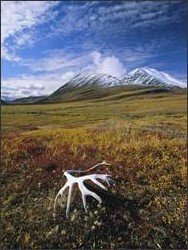Diversity Over Space and Time


Latitudinal distribution of surface
area
•
Surface
area declines from equator to poles.
•
Distribution of land v. oceans has nearly
reversed over geologic time.
•
Influences climatic gradients and area of different
environments.

Diversity Gradients Have Three Major
Influences
•
Ecological
interactions and tolerances to environment: species inhabit areas with
appropriate resources and climate.
•
Evolutionary
processes: speciation and extinction rates vary over time and space.
•
Earth
history, including plate motions, climate change, and landscape change,
determines the geography of environmental gradients and barriers to
geographic-range shifts.
Earth History and Diversity Gradients
•
We
observe high diversity in tropical latitudes today, and the climatic tropics
are restricted to low latitudes.
•
50
million years ago, climatically tropical environments extended over much of the
earth, encompassing a much larger area of land and sea than today.
•
Global
cooling caused tropical ecosystems to shrink to low latitudes, temperate
ecosystems to expand, and boreal ecosystems to appear.
•
Modern
tropical diversity reflects the legacy of a long existence and large area of
this ecosystem.
•
High-latitude
boreal forest and tundra ecosystems are geologically young.
Summary
•
Species
diversity displays strong geographic gradients, especially the increase in
species diversity at low latitudes and in regions of topographic complexity.
•
These
gradients in species diversity follow latitudinal temperature gradients today.
•
Over
geologic time, these gradients were much shallower, corresponding to shallow
temperature gradients.
•
Both
the age and the historically large area of tropical ecosystems contribute to
high tropical diversity today.